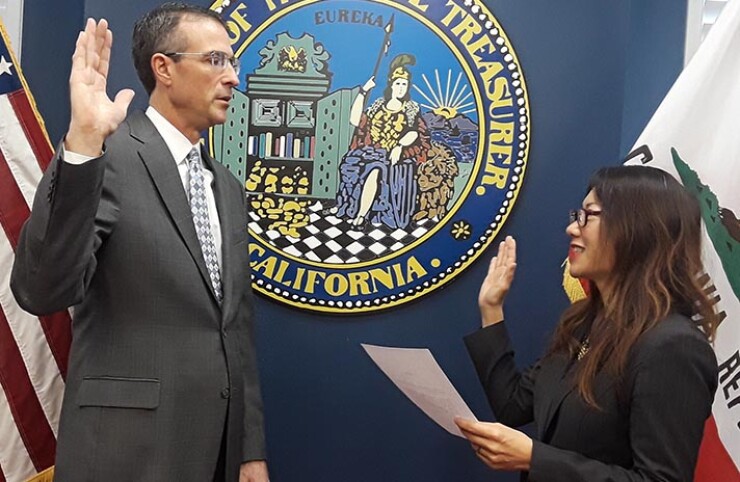The California State Treasurer's Office will relaunch its DebtWatch website on May 1, offering a more user-friendly format with vastly more data than the original 2015 version.
The website's software will allow investors, issuers and taxpayers to access all the data the California Debt and Investment Advisory Commission gathers on bond issuance to allow them to build datasets for research or to create charts.
"Giving taxpayers easy access to data and information about how the government borrows money is at the heart of public transparency," said State Treasurer Fiona Ma. "CDIAC is a fantastic resource for public issuance data and education, particularly for local government officials. The new DebtWatch site only makes them more invaluable."

CDIAC plans to host online trainings and demonstrations of the new site shortly after the official launch.
The
The state, however, collects much more data from issuers than it did when the website first launched.
Prior to the passage of Senate Bill 1029 in 2017, the state collected information on land-based debt annually and when debt was sold, but didn't track how the proceeds were used, said CDIAC Executive Director Robert Berry.
The California Senate, reacting to an embezzlement case involving community development bonds,
"We now collect information on the entire lifecycle of debt from issuance through maturity or refunding," Berry said. "Much more information is coming into us every year. The system was set up to help portray that debt."
The changes allow users to access information at a very detailed level across different data types, Berry said. The streamlined system will also enable CDIAC to upload the data on a daily basis as it comes in, rather than monthly, he said.
The state treasurer's office has been following proposed
"To the extent we are able to include those technological enhancements we are going to see if we can be on that bandwagon, with that technology," Berry said. "We are watching that closely."
Berry said he began working on the upgrades soon after he was
"There was an obvious need to make these improvements," Berry said. SB 1029 "changed the information coming in and increased the number of people submitting information. That changed the whole game for us."
But CDIAC didn't re-create the wheel so to speak, the program is built on familiar search and filtering techniques, at least for people familiar with how Excel works, he said.
Now, if someone wants to create a portfolio including all the debt information from utilities over the past 10 years, they can, he said.
"They can create that kind of database from our data," he said. "They can pull it down and stack it up. It will make a lot more sense."
It will meet the needs of what Berry calls "super users," who are creating their own statistical analysis and charts from the state's data. But even taxpayers, who just want to see how the money from the school bond they voted for is being used, can access that information, he said.
The system will continue to improve after the launch. CDIAC will be adding additional summaries, reports and tabular presentations of the data through the end of June, Berry said.
They will also make tweaks based on user feedback.
"We are positioning the database and distribution to pursue a continuous enhancement process, so we can continually make changes," Berry said.





